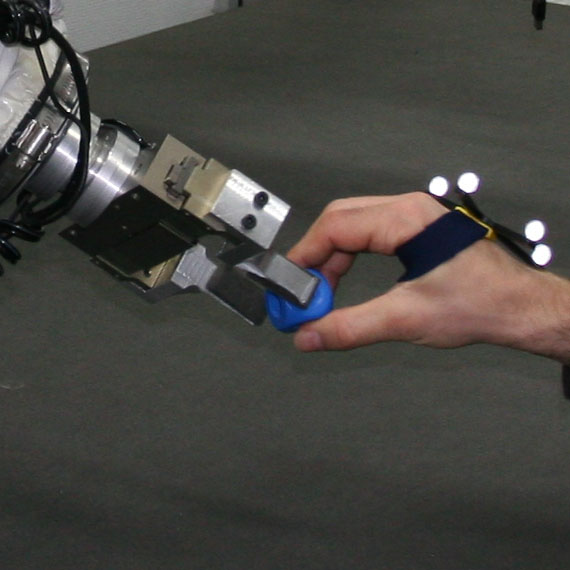| Type |
DA, MA |
| Supervisor |
Prof. Dr.-Ing. Alois Knoll |
| Advisor |
Dipl.-Inf. Helmuth Radrich |
| Student |
Alice Sotzek |
| Research Area |
Human-Robot Interaction, Intention Recognition, Robotics, Machine Learning |
| Associated Project |
BAJA |
| Programming Language |
MatLab, C++ |
Basic Aspects of Joint Action ( BAJA )
What makes a good assistant ...
Efficient human-robot interaction requires that robots recognize and display intentions. In order to endow robots with a natural, predictable, and adaptive behaviour, we investigate human joint action experimentally to identify critical parameters, evaluate how these parameters are negotiated, and to ultimately transfer the results to robotic systems.
Description
The goal of this thesis is to use Hidden Markov Models to detect the current state and predict future actions of a human in a complex assembly task.
The algorithms can be developed and tested offline on data that we have already recorded (MatLab).
Then the algorithms should be implemented for online testing on a robotic platform (C++,
JAHIR or
JAST or both!).
An analysis of the developed algorithms performance during Human-Robot Interaction is to be performed.
Please feel free to contact me! (
Helmuth Radrich )
We can discuss ways to adapt the project to your specific background and expertise...
Literature
[1] Lawrence R. Rabiner (February 1989). "A tutorial on Hidden Markov Models and selected applications in speech recognition". Proceedings of the IEEE 77 (2): 257-286.
